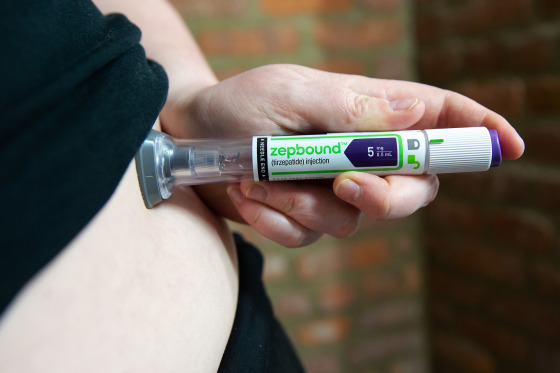Report on Global Trends and Burden of Low Birth Weight and Short Gestation in Relation to Sustainable Development Goals
Introduction
Low birth weight (LBW) and short gestation (LBWSG), defined as birth before 38 weeks of gestation and birth weight below 3,500 g, represent critical public health challenges globally. These conditions are closely linked with increased risks of premature mortality and developmental delays, disproportionately affecting low- to middle-income countries (LMICs) where over 90% of LBW infants are born. This disparity underscores significant inequalities in maternal and child healthcare access and nutrition compared to high-income countries.
Addressing LBWSG is integral to achieving the Sustainable Development Goals (SDGs), particularly SDG 3 (Good Health and Well-being). The World Health Organization (WHO) has identified a 30% reduction in LBW as a key global nutritional target by 2030. Preterm birth remains the leading cause of under-5 mortality worldwide, accounting for 18.1% of deaths in 2021, with survival chances varying drastically between LMICs and high-income countries due to healthcare quality and accessibility differences.
Maternal nutrition and quality prenatal care are essential to prevent LBWSG, ensuring infants are carried to term with healthy birth weights. Postnatal care, especially for preterm and LBW infants, is critical to reduce mortality and long-term disabilities. However, geographic and financial barriers in LMICs often limit access to such care, exacerbating health inequalities.
While mortality rates have seen some improvements, the long-term burden of LBWSG, measured by disability-adjusted life years (DALYs) and years lived with disability (YLDs), has not been comprehensively evaluated globally over extended periods. This report analyzes trends in LBWSG mortality, DALYs, and YLDs among children under 20 years from 1990 to 2021, with a focus on disparities across countries categorized by sociodemographic index (SDI) levels, to inform policy and resource allocation aligned with SDGs.
Methodology
Data Sources
Data were sourced from the 2021 Global Burden of Disease (GBD) study, which utilizes DisMod-MR version 2.1 to model non-fatal disease burden. The study adheres to the Guidelines for Accurate and Transparent Health Estimates Reporting (GATHER) and GBD protocols. LBW was defined as birth weight under 3,500 g, and short gestation as gestational age under 38 weeks.
The analysis included mortality rates, DALYs, and YLDs for children under 20 years of age from 204 countries and territories, classified into five SDI categories (high, high-middle, middle, low-middle, low) and 21 geographical regions.
Sociodemographic Index (SDI)
SDI is a composite measure of a country’s social and economic development, incorporating lag distributed income per capita, mean educational attainment for individuals aged 15 and older, and fertility rates under 25 years. This index correlates strongly with health outcomes and was used to stratify countries for comparative analysis of LBWSG burden.
Age Group Classification
- Under 5 years
- 5–9 years
- 10–14 years
- 15–19 years
- Total under 20 years
Statistical Analysis
Trends in LBWSG mortality, DALYs, and YLDs were assessed using the average annual percentage change (AAPC) from 1990 to 2021. AAPC summarizes epidemiological trends over time, accounting for variable rates influenced by factors such as conflict or famine. Statistical significance was evaluated using 95% uncertainty intervals (CI).
Results
Global Trends
- Under-5 LBWSG deaths decreased from 3.16 million in 1990 to 1.63 million in 2021, with mortality rates halving from 501.11 to 247.07 per 100,000 (AAPC = −0.47, 95% CI: −0.55 to −0.38).
- Contrarily, LBWSG disease burden measured by YLDs increased globally across all age groups, with under-20 YLDs rising from 2.26 million (122.41 per 100,000) in 1990 to 6.38 million (242.02 per 100,000) in 2021 (AAPC for number = 0.38, 95% CI: 0.28–0.48; for rate = 0.19, 95% CI: 0.1–0.27).
- Forecasting indicates an increasing trend in DALY rates among children aged 5–19 years from 2022 to 2050, signaling growing long-term disability burdens.
Impact of Sociodemographic Index
- High-middle SDI countries exhibited the greatest improvements in LBWSG mortality, DALYs, and YLDs across all age groups.
- Low SDI countries showed no significant mortality improvements (AAPC = −0.03, 95% CI: −0.19 to 0.15) despite a decrease in absolute under-5 deaths.
- Significant increases in LBWSG YLDs were observed in low SDI countries, with under-20 YLDs nearly doubling from 536,478 to 1,331,124 (AAPC = 0.67, 95% CI: 0.53–0.82).
- Middle and low-middle SDI countries showed no significant improvements in YLDs, while high-middle and high SDI countries demonstrated reductions in under-5 YLDs.
- Forecasts predict increasing LBWSG disease burden in children aged 5–9 years in high, low-middle, and low SDI countries through 2050.
Regional Variations
Significant improvements in under-5 LBWSG DALYs and YLDs were noted in regions including Central Asia, Central Europe, East Asia, high-income Asia Pacific, Oceania, South Asia, and Western Europe. Conversely, regions such as Australasia, Eastern Europe, and Southeast Asia experienced increases in LBWSG YLDs among children under 5 years.
Older age groups (5–19 years) showed limited improvements regionally, with notable exceptions in Eastern Europe, Central Asia, and East Asia.
National-Level Findings
Seventy-three countries, spanning low to high SDI levels, reported increases in LBWSG disease burden (YLDs) among children under 20 years. Notable increases were observed in sub-Saharan African countries (e.g., Angola, Ethiopia, Kenya), South American countries (e.g., Brazil, Chile), and Asian countries (e.g., India, Indonesia, Philippines). Some high SDI countries, including Austria, Finland, Canada, and Japan, also showed rising LBWSG YLD rates.
Discussion
The analysis reveals stark disparities in progress toward the 2030 SDG target of a 30% reduction in LBWSG prevalence and mortality. While high to middle SDI countries have made significant mortality reductions, low SDI countries lag behind, reflecting persistent inequalities in healthcare access and quality.
Despite mortality improvements, the increasing burden of disabilities associated with LBWSG, as indicated by rising DALYs and YLDs, poses substantial challenges to families and healthcare systems globally. This trend is particularly pronounced in sub-Saharan Africa, parts of South America, and Southeast Asia.
Key factors contributing to these disparities include inadequate prenatal and postnatal care, maternal malnutrition, and limited healthcare infrastructure in LMICs. For example, only a small fraction of mothers in LMICs receive the WHO-recommended minimum of eight prenatal visits, impeding early identification and management of maternal risk factors.
Survivors of preterm birth often face lifelong disabilities such as developmental delays, cerebral palsy, and chronic lung disease, necessitating sustained healthcare support. The growing disability burden underscores the need for comprehensive strategies beyond mortality reduction, aligning with SDG 3’s focus on ensuring healthy lives and promoting well-being for all ages.
Policy Implications and Recommendations
- Enhance Access to Quality Prenatal and Postnatal Care:
- Increase coverage of prenatal visits to meet WHO recommendations, especially in LMICs.
- Implement routine screening for maternal hypertension, diabetes, and infections.
- Promote maternal nutrition programs to address malnutrition.
- Scale Up Low-Cost, Life-Saving Interventions for Preterm and LBW Infants:
- Implement thermal care, kangaroo mother care, feeding support, and infection control.
- Promote exclusive breastfeeding up to 6 months as a cost-effective intervention to improve infant immunity and growth.
- Address Socioeconomic Barriers:
- Develop policies to reduce financial and geographic barriers to healthcare access.
- Support education initiatives targeting maternal health and child care practices.
- Support Long-Term Care for Survivors:
- Establish healthcare and social support systems for children living with disabilities due to LBWSG.
- Allocate resources to reduce the financial burden on families and healthcare systems.
- Monitor and Evaluate Progress:
- Utilize SDI and other metrics to track progress and identify vulnerable populations.
- Align national health policies with SDG targets to ensure equitable health outcomes.
Conclusion
Significant global reductions in under-5 mortality due to LBWSG have been achieved primarily in high to middle SDI countries, while low SDI countries continue to face high mortality rates and increasing disability burdens. These findings highlight critical inequalities in healthcare access and quality, impeding progress toward the 2030 SDG target of a 30% reduction in preterm births and LBW prevalence.
To meet SDG 3 and related nutritional targets, comprehensive, equitable policies focusing on maternal health, prenatal and postnatal care, and long-term support for affected children are imperative. Addressing these challenges will require coordinated global and national efforts, prioritizing vulnerable populations to reduce health disparities and improve child survival and well-being worldwide.
Data Availability
GBD data used in this analysis are accessible via the GBD 2021 Sources Tool and visualization platforms.
Funding and Acknowledgments
This research was funded by the Bill and Melinda Gates Foundation and the Ningbo Clinical Research Center for Gynaecological Diseases, Ningbo, China (Funding number: 2024L002). The funders had no role in study design, data collection, analysis, interpretation, or manuscript preparation.
Conflict of Interest
The authors declare no commercial or financial conflicts of interest.
1. Sustainable Development Goals (SDGs) Addressed or Connected
- SDG 3: Good Health and Well-being
- The article focuses extensively on reducing child mortality and improving maternal and child health, which aligns with SDG 3.
- It highlights the importance of prenatal and postnatal care, reduction of low birth weight (LBW) and preterm births, and the management of disabilities associated with preterm birth.
- SDG 2: Zero Hunger
- Maternal nutrition and addressing malnutrition are emphasized as critical factors in preventing LBW and short gestation births.
- The article references global nutritional targets set by WHO, which relate to SDG 2.
- SDG 10: Reduced Inequalities
- The article discusses disparities in healthcare access and outcomes between low- and middle-income countries (LMICs) and high-income countries, highlighting inequalities in maternal and child health.
2. Specific Targets Under Those SDGs Identified
- Under SDG 3: Good Health and Well-being
- Target 3.2: End preventable deaths of newborns and children under 5 years of age, aiming to reduce neonatal mortality to at least as low as 12 per 1,000 live births and under-5 mortality to at least as low as 25 per 1,000 live births.
- Target 3.8: Achieve universal health coverage, including access to quality essential health-care services and access to safe, effective, quality, and affordable essential medicines and vaccines.
- WHO Global Nutrition Target: Achieve a 30% reduction in low birth weight by 2025/2030, which is linked to SDG 3.
- Under SDG 2: Zero Hunger
- Target 2.2: By 2030, end all forms of malnutrition, including achieving targets on stunted and wasted children under 5 years of age.
- Focus on improving maternal nutrition to reduce LBW and preterm births.
- Under SDG 10: Reduced Inequalities
- Address inequalities in access to prenatal and postnatal care between countries with different sociodemographic index (SDI) scores.
3. Indicators Mentioned or Implied to Measure Progress
- Age-Standardized Mortality Rates (ASMRs)
- Used to measure mortality rates associated with low birth weight and short gestation in children under 20 years.
- Allows comparison across countries and regions with different population structures.
- Disability-Adjusted Life Years (DALYs)
- Measures the overall disease burden, including years of life lost due to premature mortality and years lived with disability.
- Used to assess the burden of LBW and short gestation beyond mortality, including long-term disabilities.
- Years Lived with Disability (YLDs)
- Specifically measures the years of healthy life lost due to disability from LBW and short gestation.
- Highlights the increasing burden of disabilities associated with preterm birth survivors.
- Average Annual Percentage Change (AAPC)
- Used to analyze temporal trends in mortality, DALYs, and YLDs from 1990 to 2021.
- Helps to assess progress or deterioration over time in different countries and SDI groups.
- Sociodemographic Index (SDI)
- Composite indicator including income per capita, education level, and fertility rates used to classify countries and analyze disparities.
- Coverage of Prenatal Health Checks
- Implied indicator measuring access to quality prenatal care, e.g., percentage of mothers receiving the WHO-recommended minimum of eight prenatal visits.
- Prevalence of Low Birth Weight and Preterm Birth
- Used to monitor the prevalence and reduction targets (e.g., 30% reduction by 2030).
4. Table of SDGs, Targets, and Indicators
| SDGs | Targets | Indicators |
|---|---|---|
| SDG 3: Good Health and Well-being |
|
|
| SDG 2: Zero Hunger |
|
|
| SDG 10: Reduced Inequalities |
|
|
Source: frontiersin.org







